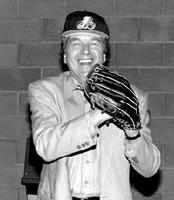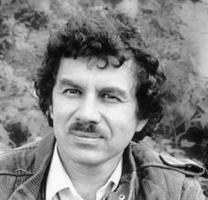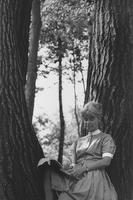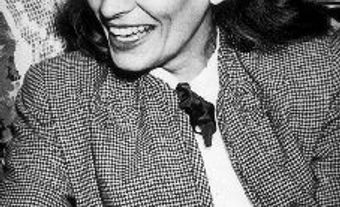Literature in French
During the 1960s, "Québec literature" became the established term used in Québec to refer to all francophone literature in Canada. Outside Québec the older expression - French-Canadian literature - has not disappeared, and Québecois historians themselves continue to use it for other Canadian French-language literatures: Acadian, Franco-Ontarian and western Canadian. The history of this francophone literature of Canada may be divided into 7 periods.
French Origins (1534-1760 )
This period began with the travel accounts of Jacques CARTIER and ended with the French regime itself. The metropolis had never allowed printing presses to be installed in the colony: works were published in France and sometimes elsewhere in Europe. Though most of the writers were born in France, a good many may be called Canadians, for they came to Canada while very young and lived here for their most active years.
The works of this period consisted primarily of the reports of discoverers (Cartier) and explorers; missionaries' letters (Les Relations des Jésuites; selections tr the JESUIT RELATIONS and Allied Documents, 1963); EXPLORATION AND TRAVEL LITERATURE (Gabriel Sagard, Baron de LAHONTAN); histories (François-Xavier CHARLEVOIX); studies of customs and mores (Joseph-François LAFITAU); spiritual writings (MARIE DE L'INCARNATION); annals (Marie Morin); and personal correspondence (Élisabeth Bégon; see AUTOBIOGRAPHICAL WRITING IN FRENCH). Few were purely literary works, excepting the writings of Marc LESCARBOT.
Narratives were primarily eyewitness accounts and descriptions. The author was more concerned with educating than amusing his reader, but since he also wanted to be interesting and was often well educated, he frequently wrote in colourful style. His pleasure in writing is contagious: today's reader gains a fresh vision of the country by rediscovering it through eyes that literally looked upon a "New World."
It is this aspect that has been most beneficial to many modern writers (Félix-Antoine Savard, Pierre PERRAULT, Jacques FERRON, Gilles VIGNEAULT These humanistic works also influenced the literature of France and inspired great writers (Rabelais, Montaigne, the Encyclopedists, Rousseau, Chateau-briand), and contributed to the development of a literature spurning socialized man and lauding the "noble savage."
Canadian Origins (1760-1836 )
After the CONQUEST of 1760, France yielded Canada to Britain in the Treaty of Paris (1763). French Canada was in ruins: it was economically and politically shattered; its administration and commerce had passed into the hands of the conquerors; its educational system had lost its teachers and its resources. The remaining 65 000 Canadiens clustered about their natural leaders: some 125 impoverished seigneurs, 100 or so priests, a couple of dozen men of the law and an equal number of doctors. Isolated from France, loyal to England, involuntarily thrown upon their own resources, they forged their will to live through fidelity to their French origins.
In 1764 the first Québec NEWSPAPER was born, the bilingual Quebec Gazette/La Gazette de Québec. Its French translations were appallingly bad and the original Canadien articles either affected in tone or obsequious. A French newspaper, La Gazette du commerce et littéraire, pour la ville et district de Montréal, appeared in 1778. It was of good quality but lasted only a year. The first truly Canadien paper, Le Canadien, started in 1806. It was devoted to the defence of the rights and liberties of the conquered. With this paper the French-Canadian people found their voice and their literature took on a nationalist tone that has been nurtured ever since.
The best writer of the time was journalist Étienne PARENT, editor of Le Canadien. He clearly analysed the political battles of the 1830s, and his compatriots, although they did not always listen, respected his independence and lucidity. When he retired from journalism and abandoned politics, he was sought after as an adviser and lecturer; today, he is regarded as the first Québec sociologist.
Two orators marked the same era: Joseph-Octave PLESSIS, bishop of Québec, whose traditionalist sermons supported the authorities of the day, and Louis-Joseph PAPINEAU, political leader and charismatic populist member of the legislative assembly. There were no indigenous novels and no theatre. In 1830 an inferior imitator of Boileau, Michel Bibaud, published the first collection of Canadien POETRY. That was the sum of Canadien literary production for this period.
The Literary Homeland (1837-65)
The political struggles which stimulated the birth of Canadien literature led first to the REBELLIONS OF 1837 and then to the union of Upper and Lower Canada. French Canadians once again lost their homeland but were intellectually better equipped than in 1760. In 1824 and again in 1829, they had created a respectable network of primary schools. This system was reorganized after the union of the Canadas in 1841. At the secondary level, 7 collèges were founded after the turn of the century. The students, molded by their studies of Greco-Latin humanities and the French classics, willingly believed that the glory of a people came from its literature.
Two NOVELS appeared in 1837: Les Révélations du crime, by François-Réal Angers, an account of a real incident, and L'Influence d'un livre, by Philippe AUBERT DE GASPÉ, Jr, who drew his inspiration from anecdotes and FOLKLORE. The adventure novel made its appearance with Les Fiancés de 1812 (1844) by Joseph DOUTRE and Une de perdue, deux de trouvées (1849) by Georges Boucher de Boucherville.
The rural novel was born in 1846 with La Terre paternelle by Patrice Lacombe and Charles Guérin by P.J.O. CHAUVEAU, a great admirer of Balzac. Antoine GÉRIN-LAJOIE gave substance to Chauveau's dream and that of the majority of his compatriots by creating a whole new parish, a kind of homeland in miniature, for the hero of Jean Rivard (1862-64). The glory of the nation had its history, which Philippe AUBERT DE GASPÉ, Sr, evoked in LES ANCIENS CANADIENS (1863). Napoléon BOURASSA retold the tragic story of the ACADIAN deportation of 1755 in his touching history of an engaged couple, Jacques et Marie, 1865-66.
The historical novel, like the rural novel, was to be fashionable for a full century. It owed part of its inspiration and success to the best writer of the age, François-Xavier GARNEAU, author of HISTOIRE DU CANADA, which came out in 3 editions between 1845 and 1859. Garneau had the tone of his romantic French masters but added an entirely Canadien fervour (which did not, however, cloud his objectivity). The most highly acclaimed poet of the age, Octave CRÉMAZIE, enchanted his contemporaries with poems that borrowed heavily from history. Today's reader prefers his death-haunted poems and his letters, which attain the status of literary criticism.
Messianic Survival (1866-95 )
The preceding era had been ideologically turbulent. The INSTITUT CANADIEN, a kind of popular university founded in 1844, had drawn the ire of Monseigneur Ignace BOURGET, bishop of Montréal, because of the "liberal" contents of its library. The debate between ULTRAMONTANISTS and liberals such as L.A. Dessaulles stimulated thought and produced some interesting texts. Conservatism triumphed after the 1860s; the nation gained homogeneity but lost originality of thought.
In 1866, Father Henri-Raymond CASGRAIN established literary doctrine for the coming years. Literature was to be the faithful mirror of a Catholic, religious and moral people. He himself showed the way by theologizing history. His footsteps were duly followed: Joseph Marmette and Laure Conan (Félicité ANGERS) wrote "good" historical novels, while poets imitated the French romantics (particularly Hugo and Lamartine) and sang the praises either of NEW FRANCE (Louis-Honoré FRÉCHETTE) or of the small homeland Québec had become once again after CONFEDERATION (Leon-Pamphile Le May, Nérée Beauchemin).
Catholic journalism (Jules-Paul TARDIVEL) was dominant; literary criticism (Adolphe-Basile Routhier) was preoccupied with morality. Tedium threatened on all fronts, though it was escaped by Fréchette, a liberal, and Arthur BUIES, the only real Canadien romantic and the only great writer of the age. Also a liberal, Buies had style and showmanship; a chronicler, he observed well; a philosopher, he had independent ideas.
Exile and the Establishment of Roots (1896-1938)
The Liberals who took power in Ottawa in 1896, and then in Québec in 1897 for almost 40 years, were primarily politicians; the ideologues were either dead or silent. The first decades of the 20th century continued the established ideology of the 3 preceding ones: the dominant voice was that of nationalist historian and essayist Father Lionel GROULX. However, literature grew in importance, thanks to an educational system whose primary and secondary levels, well developed in the 19th century, now prepared students for 2 francophone universities, LAVAL and UNIVERSITÉ DE MONTRÉAL.
There was an abundance of poets. The École littéraire de Montréal sought to modernize both form and themes, though with little success except in the case of one poet of genius, Émile NELLIGAN. Between the ages of 17 and 20 (1896-99), Nelligan produced some 170 poems whose quality lifted him well above his colleagues and elders. Like them, he imitated the poets of France, but with more originality and modernity. A few others, the "exotists" (Paul Morin, René Chopin) and Robert CHOQUETTE, thematically exiled themselves from the homeland. But most poets still devoted themselves to "poetry of the soil," with more success than in the 19th century. This trend reached its ultimate expression in A l'ombre de l'Orford (1929) by Alfred DESROCHERS.
Rural novels appeared in large numbers. A Frenchman, Louis HÉMON, gave the style an international audience with his MARIA CHAPDELAINE (1916); Un Homme et son péché (1933) by Claude-Henri GRIGNON brought it back to Québec; and the genre produced its best example in Trente Arpents (1938) by Ringuet (Philippe PANNETON). Historical fiction peaked in 1938 as well, with Les Engagés du Grand Portage by Léo-Paul DESROSIERS, and then fell off.
Nationalism found poetic expression in MENAUD, MAÎTRE-DRAVEUR (1937) by Félix-Antoine SAVARD, and was then silent. Criticism, like the novel and poetry, knew a certain strength in this period (Louis Dantin, Marcel Dugas), but it was led by an academic, Monseigneur Camille ROY, whose literature textbook sustained H.R. Casgrain's influence in the collèges.
Age of Introspection (1939-57)
The economic crisis of the 1930s caused French Canadians to rethink their traditional values; WWII forced them to open themselves to the world and new ideas. Urbanization was underway; prosperity returned, and education was available to more people. People freed their minds from collective thought; the drama of society as a whole no longer overshadowed individual destiny. Writers became more introspective, in the manner of European writers (such as Mauriac, Bernanos, Julian Green, Graham Greene, Ibsen). Canadian publishing also began to develop. Traditional nationalism was transformed. It was now at the humanistic level that one sought to be a better French Canadian.
The great poets of the era (Saint-Denys GARNEAU, Anne HÉBERT, Alain GRANDBOIS, Rina LASNIER) rejected versifying and the cult of the soil for new forms and new rhythms; they travelled through interior landscapes instead. It was a revelation: unsuspected shadows were found swarming there, but light eventually broke through to show a universe of colour and open space where a new awareness was taking shape. What was once felt to be the collective duty, to survive in the face of the English, was now replaced by an appetite for life as individual men and women among other men and women.
Novelists were developing in the same way. Old stereotypes yielded to more earthy characters, as authors of the psychological novel (Robert CHARBONNEAU, André Giroux, Robert Élie, Jean Simard, André LANGEVIN) created individuals searching for themselves, not for collective salvation. French Canadian society was being transformed: it was being observed with care and a certain wariness, especially in the cities, by the first novelists of sociological analysis (Roger LEMELIN, Gabrielle ROY, Yves THÉRIAULT).
THEATRE (see also DRAMA IN FRENCH) abandoned melodrama and comedic variety shows for social satire (Gratien GÉLINAS) and intimate dramas of bourgeois family life (Marcel DUBÉ). The historians, except for Guy FRÉGAULT, were no longer purely writers; they sought cold scientific objectivity. Literary criticism marked time, but did so gracefully (Roger Duhamel, René Garneau, Guy Sylvestre).
Québec Literature since 1958
The political and social climate in Québec began to change at the end of the 1950s, the beginning of the QUIET REVOLUTION. Teaching institutions became more democratic; ideologies continued to diversify, and a new nationalism emerged that called for greater sovereignty, even for the independence of Québec. With a few surrealistic flourishes (Gilles Hénault, Roland Giguère, P.M. LAPOINTE) and much lyricism (Gaston MIRON, Jacques BRAULT, Fernand OUELLETTE, Gatien Lapointe, Paul CHAMBERLAND), the poets named their country: no longer Canada, but Québec.
The magazine PARTI PRIS (1963-68) added a socialist, populist dimension to the nationalist option. A formalist trend also appeared, however ( LA BARRE DU JOUR, Les Herbes rouges), whose stylistic exercises and linguistic experimentation led to intellectualization of literature, despite some Marxist, feminist and rock-inspired contributions (see LITERARY PERIODICALS IN FRENCH).
Novelists took the lead in the 1960s. They were preoccupied with the form and structure of their works (Jean Basile, Hubert AQUIN, Réjean DUCHARME, Gérard BESSETTE), and managed to borrow some techniques of the French nouveau roman (new novel) without losing their own originality. Female authors led the way in the creation of the poem-novel (Anne Hébert, Marie-Claire BLAIS, Louise MAHEUX-FORCIER).
The traditional novel (Roch CARRIER, André MAJOR) still existed, side by side with a novel that wove its form around its words (Victor-Lévy BEAULIEU). Feminist ideology appeared at the end of the 1970s (Nicole BROSSARD).
Theatre expanded considerably, but moved away from literature in that it became preoccupied with showmanship (Michel TREMBLAY). Even so, it was a platform for new ideologies, such as linguistic populism and feminism. There were a great number of ESSAY writers, and a few of them were literary (Fernand Dumont, Pierre VADEBONCOEUR).
A new criticism was born when Québec literature entered the universities. This criticism attempts to be scientific but as yet lacks originality, since it follows in the wake of its French and American masters. However, it has enormous influence on Québec writers, who are, often simultaneously, both its creators and its followers. Although good writers do produce work for a general audience (Michel Tremblay), the ordinary reader is as likely to turn to American bestsellers.
Québec's preoccupation with itself has compelled Francophones in the rest of Canada to look to their own literature. Similarly, the all-powerful nature of the Montréal literary establishment has provoked (with the help of the Québec government) regional movements of self-awareness in other parts of Québec. Montréal has largely replaced Paris as the literary metropolis of the Canadian francophone world.
See also SHORT FICTION IN FRENCH; LITERARY BIBLIOGRAPHY; LITERARY PRIZES; ORAL LITERATURE; POPULAR LITERATURE IN FRENCH.

 Share on Facebook
Share on Facebook Share on X
Share on X Share by Email
Share by Email Share on Google Classroom
Share on Google Classroom









